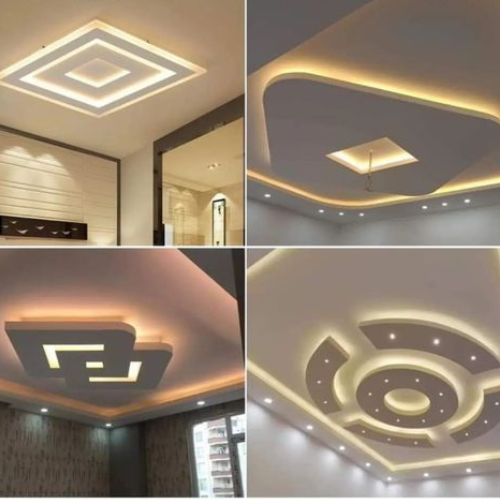
A Comprehensive Guide to Houses and Construction Costs in Nepal
-
Introduction: Understanding the Importance of Housing in Nepal
Housing is a fundamental aspect of our lives, providing more than just shelter; it creates a home where families gather, build memories, and foster community. In Nepal, the significance of housing is profound, intertwined with cultural values, geographical diversity, and economic conditions. This comprehensive blog post delves into what constitutes a house, explores the various factors influencing construction costs, and provides valuable insights on building practices in Nepal.
What is a House? The Multifaceted Concept of Housing
A house represents:
1. Social Stability: It serves as the foundation of family interactions, promoting social bonds and community cohesion.
2. Safety and Security: A well-constructed home protects residents from the elements and potential hazards.
3. Health and Well-being: Adequate housing ensures proper ventilation, sanitation, and shelter, contributing to the overall health of its occupants.Understanding the importance of housing lays the groundwork for exploring the costs associated with building homes in Nepal.
Factors Influencing Housing in Nepal
1. Cultural Influences
Nepal boasts rich cultural diversity, leading to various architectural styles that reflect the traditions of different ethnic communities. Traditional Nepali houses, predominantly built with local materials such as stone and timber, showcase distinct cultural motifs. As modern influences enter the market, many are adopting global designs that respect local customs while offering new functionalities.
2. Geographical Considerations
The geography of Nepal, with its varied terrains—from the towering Himalayas to the flat plains of Terai—significantly influences housing design and construction methods. For example, houses in hilly regions must be constructed to withstand landslides and earthquakes, while homes in the Terai may emphasize elevation and ventilation due to the warmer climate.
3. Economic Factors Affecting Housing Construction
Economic conditions greatly impact housing developments in Nepal. Factors such as average income levels, the availability of credit, and local job opportunities dictate how families approach building their homes. A strong understanding of these economic variables is essential for assessing housing feasibility.
Construction Costs in Nepal: A Breakdown
Building a house in Nepal involves several key cost components. Here’s a detailed overview of what influences construction expenses:
1. Materials
The choice of materials significantly affects overall costs. Common materials include:
Cement and Bricks: Popular for modern constructions due to durability and cost-effectiveness.
Timber: Frequently used in traditional homes, its costs can vary by wood species and availability.
Stone and Mud: Often utilized in rural housing, these materials are economical but may require ongoing maintenance.2. Labor Costs
Labor expenses are another major consideration in construction costs. Prices for skilled and unskilled labor can vary significantly depending on the area. Urban regions like Kathmandu generally have higher labor costs due to demand, while rural areas may provide more affordable labor options.
3. Design Complexity and Construction Type
The complexity of the home design directly impacts costs. A simple, one-story house will be cheaper to build than a multi-story structure with intricate designs. Furthermore, integrating energy-efficient technologies or eco-friendly materials may increase initial costs but offer long-term savings on energy bills.
4. Location Matters
The geographical location of the house dramatically affects construction costs. Urban centers such as Kathmandu usually present higher land and labor costs when compared to rural areas. Accessibility to resources and infrastructure also plays a vital role in overall expenses.
Expected Construction Costs in Nepal
Based on 2024 estimates, the construction costs for different types of houses in Nepal are approximately:
1. Traditional House: NPR 1,800 to NPR 3,000 per square feet.
2. Modern House: NPR 2,800 to NPR 3,800 per square feet, subject to materials and design choices.
3. Luxury House: Costs can soar to NPR 3,200 to NPR 4,500 or more per square feet in prime locations.Conclusion: Building a Strong Future with Quality Housing
Building a house in Nepal requires a thoughtful evaluation of diverse factors, including cultural values, geographic challenges, economic realities, and material availability. The costs associated can vary widely based on these components, but the end goal remains consistent: to create safe, comfortable, and functional living spaces that support family life and foster community connections.
As Nepal continues to evolve, so too does its approach to housing, blending traditional and modern practices to meet the diverse needs of its population. Whether you’re considering building your own home or simply seeking to expand your understanding of housing in Nepal, this guide serves as a valuable resource for making informed decisions.
By optimizing your housing investments today, you’re not just building a house; you’re laying the foundation for a better tomorrow.
# Houses in Nepal
# Cost of building a house in Nepal
# Housing construction in Nepal
# Traditional Nepali houses
# Modern architecture in Nepal
# Construction costs Nepal 2024
# Home building materials in Nepal
# Economic factors in housing Nepal







